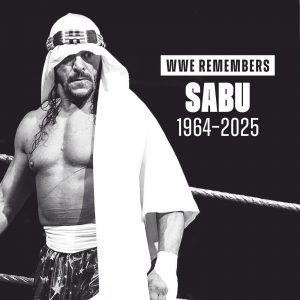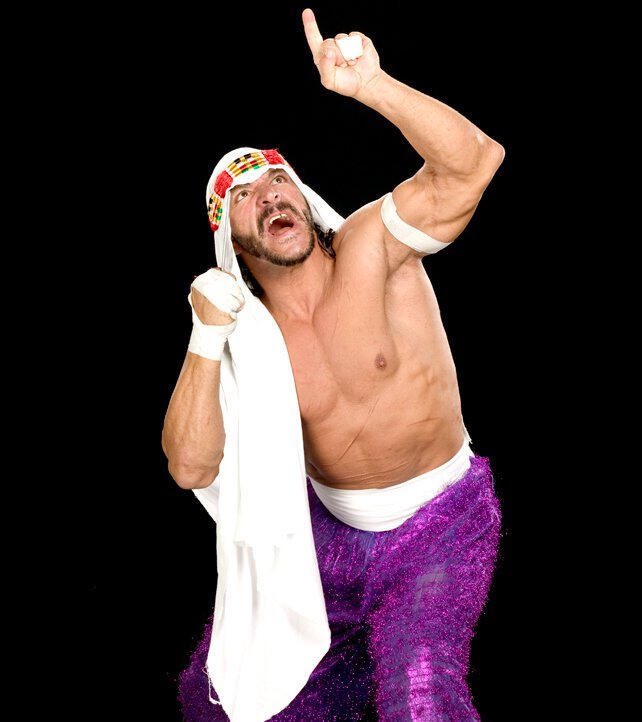The wrestling community is mourning the loss of Terry Brunk, known to fans around the world as Sabu, who has died at the age of 60. Famous for his fearless, high-risk style, Sabu redefined hardcore wrestling with his brutal, boundary-pushing performances. Over a career that spanned more than 30 years, he made a lasting impact on major promotions like ECW, WWE, and AEW, inspiring generations of wrestlers and fans alike with his unrelenting passion for the sport.
A Life in the Ring

Born on December 12, 1964, in Detroit, Michigan, Terry Brunk seemed destined to enter the wrestling world. Trained by his uncle—the legendary Ed Farhat, better known as The Sheik—Brunk took on the name Sabu, inspired by a Hollywood character, and stepped into the ring in 1985 under his uncle’s Big Time Wrestling promotion. From his early days on the indie circuit, it was clear Sabu had a unique style. With a mix of aerial maneuvers and brutal weapon use, he began to carve out a niche that would eventually become his signature.
Sabu rose to prominence in the 1990s through his unforgettable run in Extreme Championship Wrestling (ECW). Branded “The Homicidal, Suicidal, Genocidal, Death-Defying Maniac,” he quickly became one of ECW’s most iconic figures. He was known for pushing his body to the limit—diving through tables, wrapping himself in barbed wire, and enduring beatings that few others would dare. His legendary rivalries with Taz and Rob Van Dam became the stuff of ECW lore, filled with matches that fans still talk about for their wild intensity and innovation.
Triumphs and Trials
Sabu’s journey took him far beyond ECW. He wrestled internationally, including a stint with Japan’s Frontier Martial-Arts Wrestling (FMW), where he further refined his hardcore approach. In 2006, he brought his chaotic energy to WWE during its ECW revival, most memorably facing off against John Cena in a grueling match at the Vengeance pay-per-view. Later, he appeared in TNA (now Impact Wrestling) and made surprise appearances in AEW, always drawing cheers from longtime fans.
But Sabu’s style came at a steep price. Years of brutal matches left him with countless injuries—broken bones, concussions, and permanent scars. His body told the story of a man who gave everything to his craft. Despite the pain, he kept going, wrestling well into his 50s with the same intensity he had in his prime.
A Final Match and a Fitting Farewell
Sabu’s final match took place in Las Vegas, a fitting setting for a performer known for spectacle and risk. True to form, the match was wild, unpredictable, and packed with the kind of moments that defined his legacy. Fans in attendance witnessed a man who never stopped performing for the love of the crowd.
While details surrounding his passing are still limited, the outpouring of love from across the wrestling world has been overwhelming.
Remembering a Trailblazer
As news of Sabu’s death spread, tributes poured in. Wrestlers, promoters, and fans shared memories and messages of appreciation. Rob Van Dam tweeted, “Sabu was a trailblazer who showed us what it means to give everything for this business.” AEW’s Tony Khan called him a pioneer, noting, “His fearlessness paved the way for so many of today’s stars.” WWE honored him as “a true innovator whose legacy will live on in the hearts of fans forever.”
A Legacy That Will Endure
Sabu’s influence on pro wrestling is undeniable. He helped shape the hardcore wrestling genre with his blend of aerial agility and brutal physicality. He pushed the boundaries of what wrestling could be—and in doing so, inspired others to take creative risks in and out of the ring.
Offstage, Sabu was quiet and deeply respectful of the wrestling business. He often shared his experience with younger talent, passing on the knowledge and passion that defined his life.
As the wrestling world says goodbye to Terry Brunk, his legacy as Sabu—a fearless, trailblazing performer—remains forever etched in history. His impact won’t be forgotten. The risks he took, the barriers he broke, and the memories he created will live on in the hearts of wrestling fans for generations to come.

